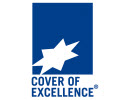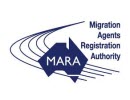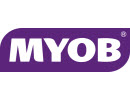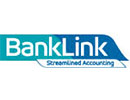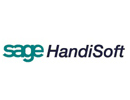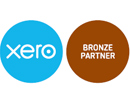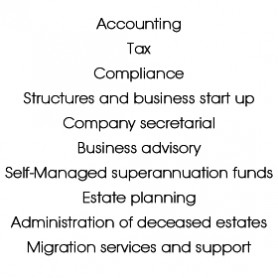The SuperStream standard is part of the government’s Super Reform package. It will provide a consistent, reliable electronic method of transacting linked data and payments for superannuation. The goal is to improve the efficiency of the superannuation system, to improve the timeliness of processing of rollovers and contributions, and reduce the number of lost accounts and unclaimed monies.
What is SuperStream?
SuperStream is a government reform aimed at improving the efficiency of the superannuation system.
Under SuperStream, employers must make super contributions on behalf of their employees by submitting data and payments electronically in a consistent and simplified manner.
How will SuperStream benefit employers?
These changes have a range of potential benefits for employers, including:
- the opportunity to use a single channel when dealing with super funds, regardless of how many funds your employees contribute to
- less time spent dealing with employee data issues and fund queries
- greater automation and reduced cost of processing contributions and payments
- more timely flow of information and money in meeting your superannuation obligations.
Who does SuperStream apply to?
SuperStream is mandatory for all employers making super contributions, APRA-regulated super funds, and self-managed superannuation funds (SMSFs) receiving contributions.
Why is SuperStream being introduced?
The main purpose of SuperStream is to ensure employer contributions are paid in a consistent, timely and efficient manner to a member’s account. The change also removes many of the complexities employers currently face as a result of funds being able to set up different arrangements for accepting contributions (due to the lack of common standard).
When do I have to start using SuperStream?
20 or more employees: If you have 20 or more employees (medium to large employer) SuperStream started from 1 July 2014. From that date, employers needed to start implementing SuperStream and have until 30 June 2015 to meet the SuperStream requirements when sending superannuation contributions on behalf of employees.1
We are facilitating the implementation of SuperStream for employer contributions by coordinating the introduction of compliant SuperStream solutions. You will need to work with your service provider to decide when best suits to make the change.
19 or fewer employees: If you have 19 or fewer employees (small employer), SuperStream starts from 1 July 2015. You have until 30 June 2016 to meet the SuperStream requirements when sending superannuation contributions on behalf of your employees.2
Note: You can voluntarily adopt the SuperStream from 1 July 2014 if you are ready, and many solution providers may offer to assist you to do this from this date.
What are my options for meeting SuperStream?
Every business is different, so there’s no ‘one size fits all’ approach to adopting SuperStream.
Employers have options for meeting SuperStream – either using software that conforms to SuperStream; or using a service provider who can meet SuperStream on your behalf. We recommend that you start investigating your options now.
Your options may include:
- upgrading your payroll software
- using an outsourced payroll function or other service provider
- using a commercial clearing house or the free Small Business Superannuation Clearing House (19 or fewer employees).
Your default fund may also have its own electronic channel that can be used during the transitional period up to 30 June 2016. This fund can provide you with details about how to comply with the SuperStream using their preferred facilities.
Do I need to collect additional information to make contributions using SuperStream?
Yes. To support contributions being made using the SuperStream standard employers will need to collect some new data that will be included in their payroll file to facilitate electronic processing.
Employers will need to collect the following information:
- unique superannuation identifier (USI) for APRA-regulated funds
- ABN for SMSF funds
- bank account details
- electronic service address.
For existing employees, simple processes will be implemented to enable employers to obtain this information. This may include receiving information:
- direct from your
- through the Fund Validation Service
- via employees who have elected a choice fund (such as a self-managed super fund)
- through a clearing house.
For new employees, the choice of super fund form will be updated to include this information.
Your HR or payroll provider will provide you with options to support the capture of this information whether this is updating your existing payroll file or storing this information until an update is made available.
To support your readiness for SuperStream you should contact your HR/payroll solution provider to understand their plans.
What information do I need to collect from SMSFs?
If you have an employee who is a member of a SMSF, they must provide you with details about their fund which enables you to deal with them electronically, so supporting your implementation of SuperStream.
This information includes the ABN of the SMSF, their bank account details, and an electronic service address. This information will enable you to send contributions and payments electronically in the same way for all employees.
Typically, this information should be updated into your payroll records (or provided to an agent who may assist you with contributions). You will generally only need to do this once. As new employees join your business, they will provide this information as a matter of course when they complete a choice of fund form.
To simplify this process on your first time through, it is suggested that you notify employees of your intended date for implementing SuperStream and request this information to be forwarded by the employee within a reasonable time – for example, within 28 days of a reminder. We have already written to SMSF trustees associated with large and medium employers informing them of their obligation to provide this information to their employer, and a similar letter will be issued to remaining SMSF trustees shortly.
Your employee can communicate this information in a variety of ways (paper, email, or direct update to your payroll/HR system), provided the minimum data is provided and is valid or complete.
What if I haven’t got all the SMSF details I need?
If you do not receive the SMSF’s details by the date you have nominated for responding – and provided a reasonable response period has been given – you may ask your employee to complete a standard choice form and return this form to you within 28 days.
The current standard choice form has been updated to contain fields which include the required mandatory information to support SuperStream (including the ABN of the SMSF, their bank account details, and an electronic service address). An existing employee may have previously completed such a form, their selection of choice must now be updated with the new information.
If this information is not provided, your employee will be deemed as not having provided sufficient details for the choice fund to be accepted, and you may redirect their contributions to the default fund of the employer.
An employer in this situation may, nevertheless, decide to give an employee more time to respond and continue paying by cheque or some other non-conforming method. This should only be considered as a temporary measure because it is likely to erode the benefits employers should gain from the overall shift to a consistent, electronic method for all contributions.
Remember that large and medium employers need to be SuperStream compliant by no later than 30 June 2015, so the lead time for notifying your employees with SMSFs is shortening.
